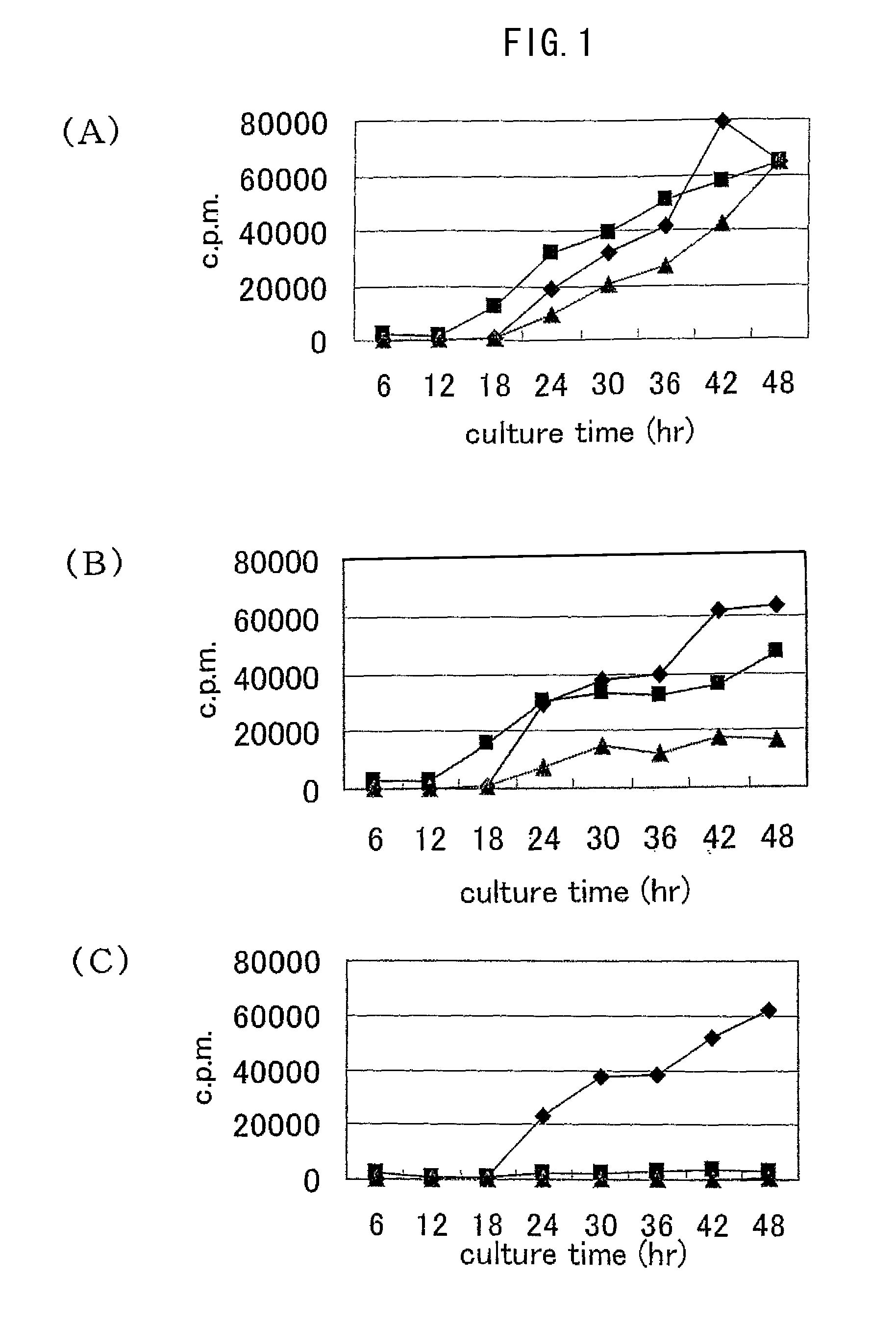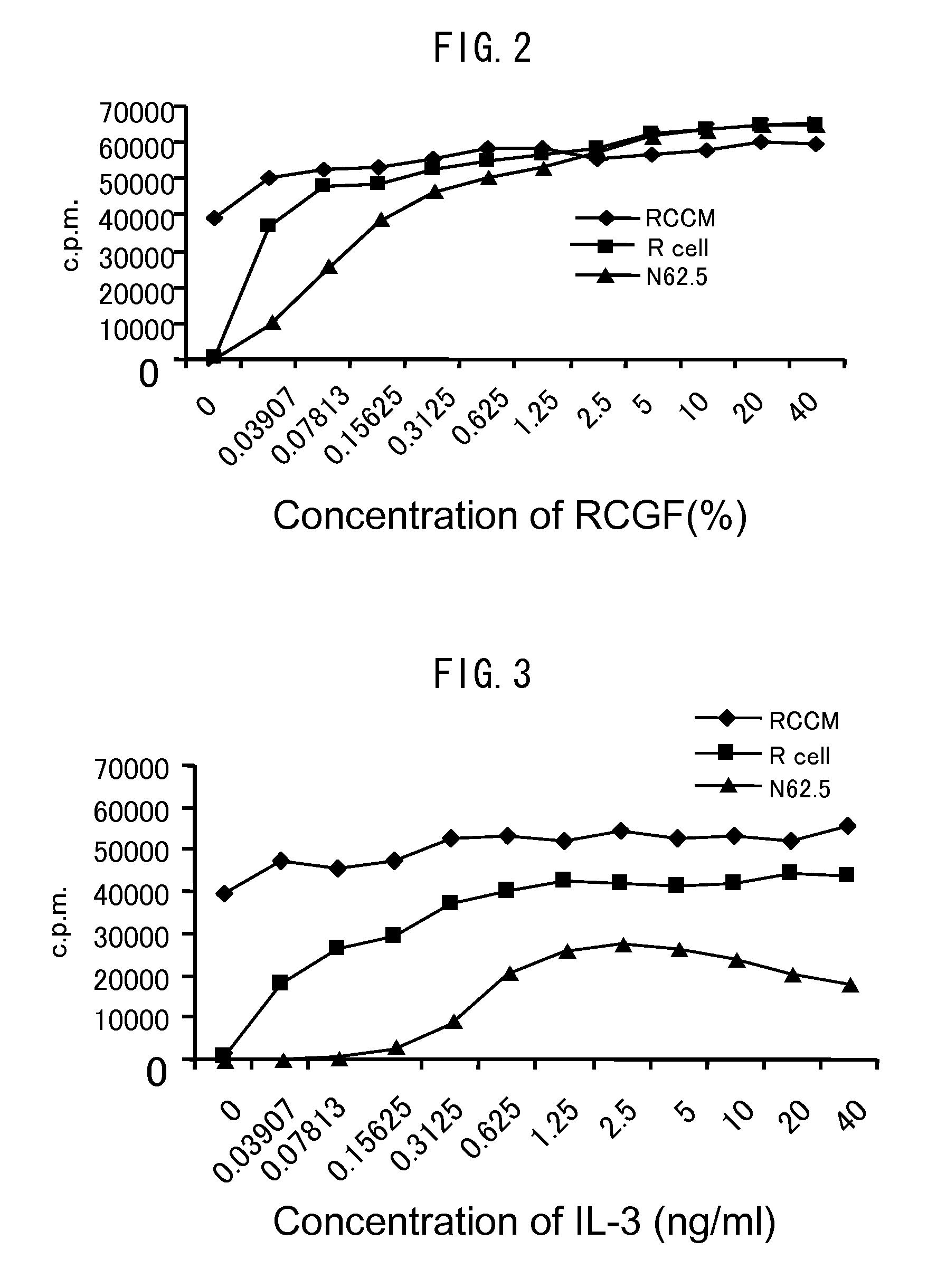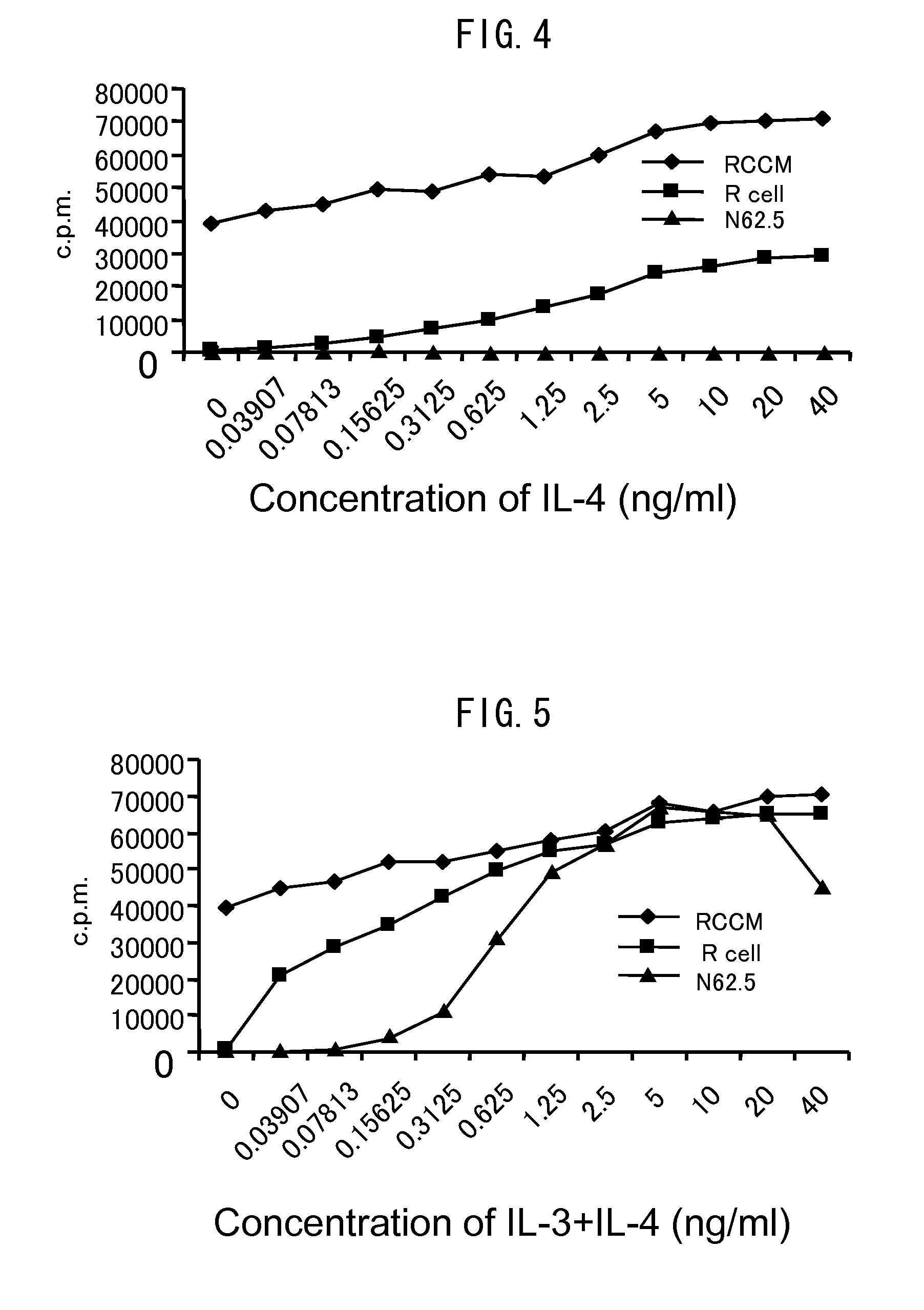Method for screening allergic disease-related molecule and cell lines to be used in the method
a cell line and antibody technology, applied in the field of antibody-related antibody and cell line screening, can solve the problem of unsuitable cell line for efficient screening, and achieve the effect of efficient screening of antibody-related substance and cell lin
- Summary
- Abstract
- Description
- Claims
- Application Information
AI Technical Summary
Benefits of technology
Problems solved by technology
Method used
Image
Examples
example 1
Production of Cell Lines
[0066]The spleens were extirpated from ten-week-old female DO11.10 TCR transgenic mice (donated by Professor Ken Murphy, University of Washington, U.S.). The spleen cells were cultured under conditions where OVA antigen peptides (chicken OVA (cOVA) 323-339 peptide: ISQAVHAAHAEINEAGR: SEQ ID NO 1) were added to an RPMI culture medium (10% by volume of FCS, 100 U / ml of potassium penicillin G, and 100 μg / ml of streptomycin sulfate were added: hereinafter simply referred to as a culture medium containing 10% serum) so as to give a final concentration of 1000 nM or 250 mM.
[0067]T cells showing OVA antigenic peptide reactivity were obtained from the resulting culture. The T cells were cultured while they were stimulated by anti-CD-3 antibodies at 37° C. for 24 hours and a culture supernatant (R cell growth factor-containing solution: RCGF) was obtained. Hereinafter, when the RCGF was used for cultivation, the RCGF obtained by culturing for two days was mixed with a...
example 2
Analysis of Characteristics of Cell Lines
[0071]With reference to R cells (Accession No. FERM BP-10918), N62.5 cells (Accession No. FERM BP-10919), and RCCM cells (Accession No. FERM BP-10920) which were obtained in the above-described manner, surface antigen analysis was carried out using various antibodies.
[0072]Fluorochrome (FITC) conjugated antibodies such as anti-mouse c-kit antibody (manufactured by e-Bio), anti-mouse FCε RI antibody (manufactured by e-Bio), anti-mouse B220 antibody (manufactured by e-Bio), anti-mouse CD3 antibody (manufactured by e-Bio), anti-mouse FcγRII / III antibody (manufactured by Pharmingen), anti-ClassI antibody (manufactured by Pharmingen), anti-mouse DX5 antibody (manufactured by e-Bio), or anti-ClassII antibody (manufactured by Pharmingen) were used. About 5 to 10 μg of the respective antibodies were reacted with an R cell (1×106 / 100 μl) on ice for 30 minutes. The binding state of the antibodies was analyzed using FACS.
[0073]The results are shown in F...
example 3
Experiments of Sensitivities of Various Cells to RCGF
[0078]R cells, N62.5 cells, or RCCM cells obtained in Example 1 were placed in each well of a 96-well microplate at a seeding density of 1.5×104 cells / well. A culture medium in which the content of RCGF was changed was used and the sensitivities of the cells to RCGF were confirmed.
[0079]The concentrations of RCGF were set to 10 v / v %, 0.1 v / v %, and 0 v / v %. The cells were cultured in an RPMI 1640 culture medium containing 10% by volume of serum at 37° C. in 5% CO2 atmosphere for 48 hours. Thereafter, 3H-thymidine was added to the culture medium so as to give a final concentration of 0.5 μCi / ml, and the resultant was further cultured for 12 hours and the uptake amount of 3H during the time was measured. After the reaction, the uptake amount of 3H-thymidine was measured using MicroBeta TRIL UX (manufactured by WALLAC). The results are shown in FIG. 1. In FIGS. 1 (A) to (C), black rhombuses indicate RCCM cells, black squares indicat...
PUM
| Property | Measurement | Unit |
|---|---|---|
| concentration | aaaaa | aaaaa |
| concentration | aaaaa | aaaaa |
| concentration | aaaaa | aaaaa |
Abstract
Description
Claims
Application Information
 Login to View More
Login to View More - R&D
- Intellectual Property
- Life Sciences
- Materials
- Tech Scout
- Unparalleled Data Quality
- Higher Quality Content
- 60% Fewer Hallucinations
Browse by: Latest US Patents, China's latest patents, Technical Efficacy Thesaurus, Application Domain, Technology Topic, Popular Technical Reports.
© 2025 PatSnap. All rights reserved.Legal|Privacy policy|Modern Slavery Act Transparency Statement|Sitemap|About US| Contact US: help@patsnap.com



